Pneumatic Antenna Launcher Performance
Antenna Launchers
The Compressed Air powered Tennis Ball Launchers described here are used
for launching light lines over trees. These light lines are used to pull
up heavier lines, and then used to support antennas, typically for
emergency or temporary operations. They have been found to be extremely
effective for this use, but this is the first performance comparison
that I have published.
Testing Methodology
These tests are conducted by simply launching a tennis ball (nearly) straight up,
tied to the end of a line, and measuring the line extended to determine the
maximum height. The initial height of the reel is not included, it might add
as much as 10 feet to these heights depending on the configuration at launch.
A Saunders bowfishing Zip Reel is used, which is 21 inches in circumference,
so the measurement is made by counting turns when replacing the line.
The line used varies, 30 pound dacron or 50 pound spectra were used here.
The tennis ball is slightly weighted producing a 4 to 5 ounce total weight.
This has been determined to be about the best tradeoff of height, safety,
and ability to pull the line down over the tree foliage's drag.
(Trident data 5 oz, others 4 oz).
Since these are Tennis Ball launchers they all have the same bore -
schedule 40 PVC of the 2.5" size.
The actual bore is a bit smaller than 2.5".
In some cases some data points are calculated, estimated or projected.
The calculations are based on velocity measurements, in some
cases with different weight balls, and compensated for the
changes.
The number of
measurements is not large, over time this will improve and the
results become more proven.
In the meantime this can be taken as a rough guide.
Hopefully it will be useful.
The Launchers
I will present the Launchers, more or less in chronological order
of development. These have all been used successfully for Antenna Launching.
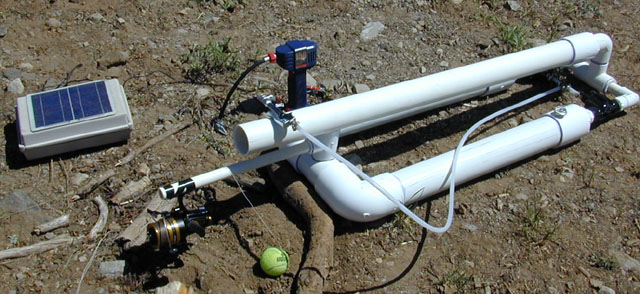
Bertha (G2)
This is Eric WD6CMU's first production launcher, the G2.
It served us well for Antenna Launching during Field Day 2002.
It provided data for modelling these systems which helped guide
us in subsequent development.
See his Web pages for details.
The data for this launcher was derived from velocity measurements
on a 2 oz ball.
- Barrel length 48 inches
- Pressure Chamber Capacity 530 cubic inches
- Valves dual Rainbird 1 inch straight, adapted for Pneumatic control
- Trigger pneumatic blowgun valve with Tee to feed both Rainbirds
- Weight approx 25 pounds
- Overall Lenght approx 55 inches
- Construction fairly straightforward (must modify sprinkler valves for pneumatic operation)

U37A
This was my first Launcher design based on the modelling calculations.
I made the barrel less than full length and added a pre-chamber because
the modelling indicated this would improve performance over the longer
barrel, and it helped solve some mechanical interference problems
with the configuration.
It has become my test platform, so it has been frequently modified.
This model is the subject of the QRP Quarterly
magazine article.
The data for this launcher was derived from velocity measurements.
Since this launcher has been updated I cannot make new
measurements on it using the new methodology.
- Barrel length 21 inches
- Pressure Chamber Capacity 200 cubic inches
- Valve Rainbird 1 inch U valve
- Trigger Microswitch applying 24 volts DC from 16 AA batteries
- Weight approx 12 pounds
- Overall Length approx 37 inches
- Construction straightforward

QE28C
The availability of a 3/4 inch commercial quick-exhaust valve led me
to design a launcher around it.
This is a very simple launcher to construct (no drilling, tapping, etc) and performance is good
at high pressures, especially considering the size and weight.
- Barrel length 21 inches
- Pressure Chamber Capacity 100 cubic inches
- Valve 3/4 inch commercial quick-exhaust
- Trigger pneumatic pushbutton valve
- Weight approx 7 pounds
- Overall Length approx 28 inches
- Construction extremely straightforward

DU36B
This is the 'new improved' version of the U37A launcher.
I stripped off the electrics and converted the valve to Pneumatic.
I added a two stage trigger with a commercial quick exhaust valve to
really snap the sprinkler valve open quickly.
I also opened up some restrictive areas in the anti-siphon portion of
the U-valve.
This photo is slightly out of date - there is more plumbing now to
allow filling air to properly distribute to the quick exhaust
valve and the main chamber.
The extra dead-volume seems to reduce performance at the low end,
but it may improve performance at higher pressures somewhat.
It was originally modelled for a much less effective valve (electric)
so is not optimized for this configuration.
It is interesting to note the performance improvement vs
the electrically triggered version (U37A).
The handles and trigger are very ergonomic, this launcher is very
comfortable to use in spite of its high weight.
- Barrel length 21 inches
- Pressure Chamber Capacity 200 cubic inches
- Valve Rainbird 1 inch U valve modified for Pneumatic Actuation
- Trigger pushbutton pneumatic 2 stage via 3/8 inch Quick Exhaust Valve
- Weight approx 12 pounds
- Overall Length approx 36 inches
- Construction fairly straightforward (modify valve for pneumatic operation)
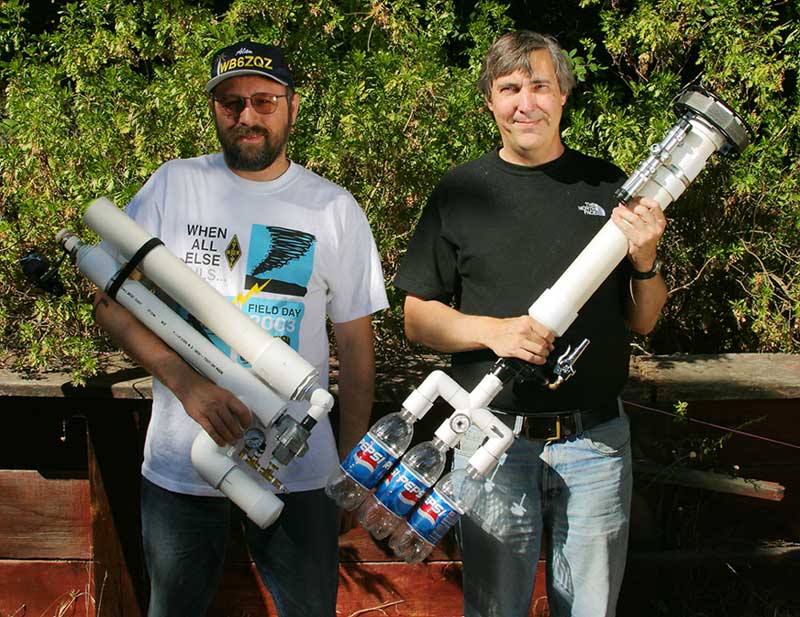
Trident
Eric's ultralight launcher (on the right, obviously)
saves weight by using Soda pop bottles for the air chamber.
Utilizing three 1 liter wide-mouth bottles it achieves excellent airflow
and performance at low pressures.
See his Web pages for details.
That is another picture of the QE28C on the left.
It is hard to see in this picture, but there is a spinning reel on
the end of the pressure chamber that feeds the line.
These launchers were used on Field Day 2003 and performed well.
- Barrel length 24 inches
- Pressure Chamber Capacity 180 cubic inches
- Valve Rainbird 1 inch straight
- Trigger pneumatic blo-gun valve
- Weight approx 5 pounds
- Overall Length 44 inches
- Construction complex (soda bottle interface)
The Reel
Eric came up with a great mounting scheme for the Saunder's Zip Reel (tm)
from the bowfishing catalogs.
See his Web pages for details.
The Graph

Conclusions
The Launchers displayed on this graph span a range of 100 to 500 cubic inches
and single 3/4" to dual 1" valves.
All of them are suitable for Antenna Line Launching, and have been used successfully
for this purpose.
The 3/4" quick exhaust valve (QE28C) and the electrically actuated 1" valve (U37A)
are at the lower end of the performance scale but readily make 200 feet height
with safe pressures.
The DU36B seems to be suffering somewhat at low pressures likely due to the significant
deadspace and turbulence in the U valve and long pipe ahead of the bore.
However at 40 PSI it is really starting to perform well.
Eric's Trident is a really good performer, with good low pressure performance and
it is headed right on up.
Eric's Bertha G2 is clearly way out there in the performance department. This is
what dual valves and over 500 cubic inches will get you.
From a construction standpoint the easiest to construct are the U37A and QE28C.
They require no special modifications to valves and minimal tools.
DU36B and Bertha G2 are a bit more complex due to modifications required for valves
to make them pneumatically triggered.
The Trident stands alone with some fancy threading to make sockets for the soda bottles,
requiring a bit of PVC machining.
If you want moderate performance, something small, light, and easy to make, consider the QE28C type
design.
If you want the lightest weight and good medium performance, and don't mind some PVC machining,
look at the Trident.
If you want medium performance, and don't mind a bit more weight, consider the Field Day 2003
special described below.
If you want more performance, there's always the G2. Either a dual-valve or coaxial valve will
give high performance. The complexity and cost go up, and so does weight. For Antenna Launching
it is probably overkill as 200 feet height is generally adequate. There are of course taller trees
(360 feet Coastal Redwoods for example) but feedline losses become excessive, and trees that
tall are usually tightly packed creating other problems. Our experience has
been that launch heights of approximately 150 feet are frequently used.
Field Day 2003 Special Antenna Launcher
We put together a couple of these, and one was used on Field Day, but they have not been
characterized yet, and I don't have final photos. Performance should be in between the DU36B
and the Trident, closer to the Trident side. Weight is about 9 pounds, I don't have the final
figures here.
Here are some photos of the parts laid out in pre-assembly.
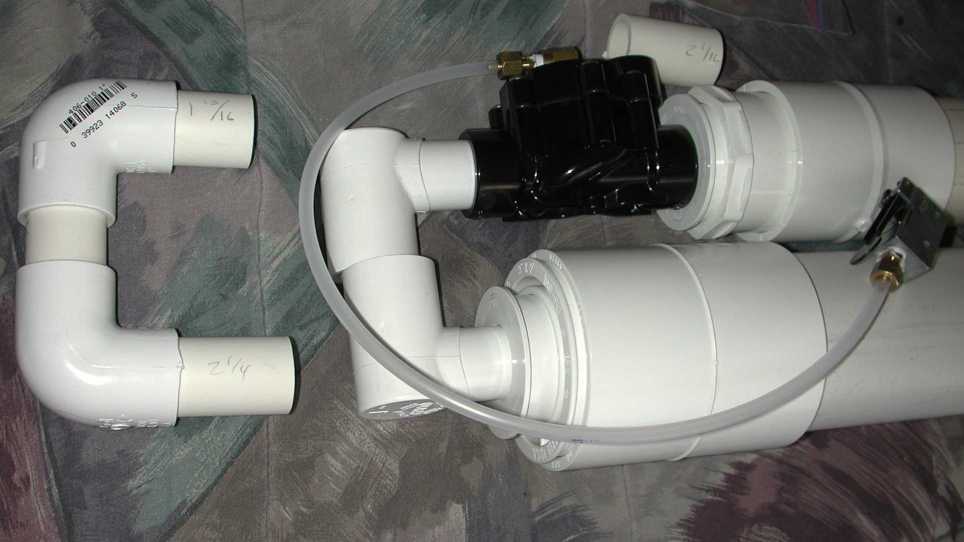

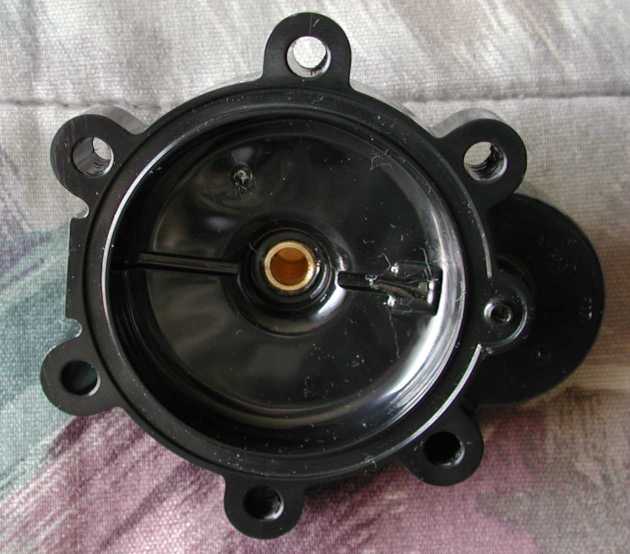
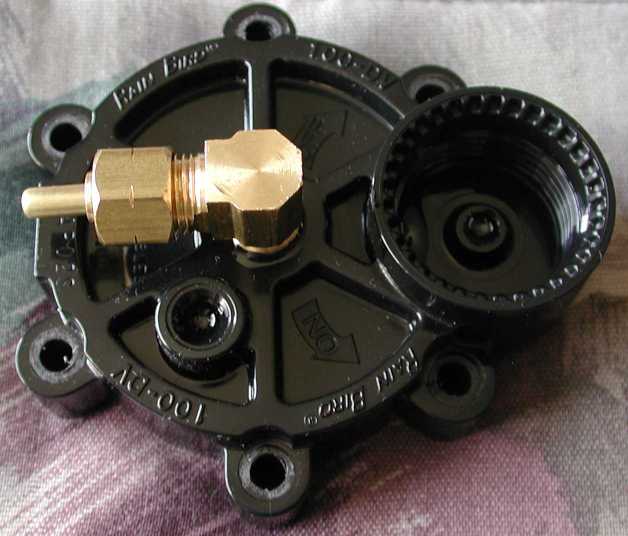
It is an over-under design of about 200 cubic inch capacity with a straight valve and 24" bore.
The valve is a Rainbird 1" straight glue-in modified for pneumatic actuation.
Two U-sections are shown - one is smoother for less turbulent airflow, the other is about 1"
shorter.
The coupler with hose clamps is for attaching a fishing reel, and the small pipe in the bore
is the ramrod.
Construction difficulty is slightly harder than the QE28C but far easier than the Trident.
Construction challenges include drilling and tapping PVC, some epoxy joints, the usual solvent
PVC joints, and cutting PVC and assembling threaded parts.
Antenna Launching Main Page
WB6ZQZ Home Page









